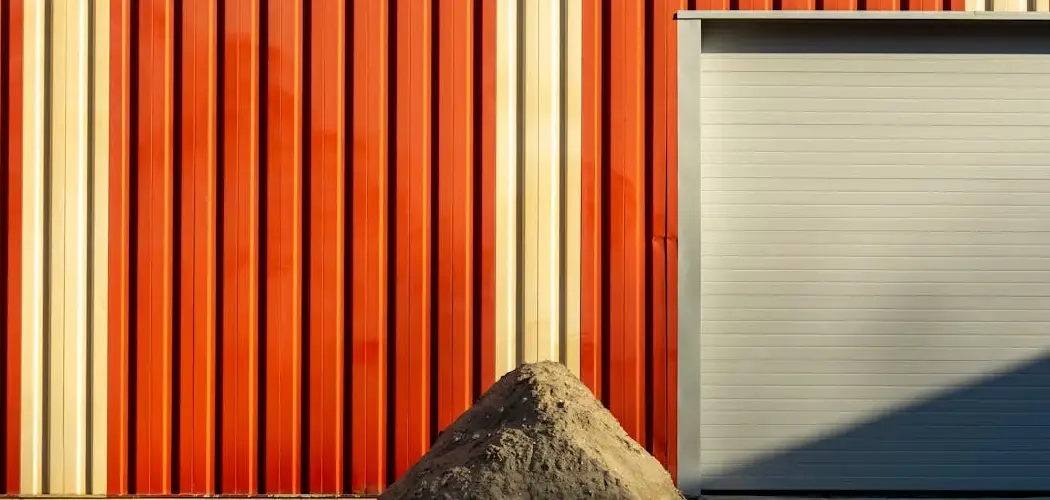Choosing the right color for your garage door is a crucial decision that significantly impacts your home’s overall aesthetic and curb appeal. As one of the most prominent features of your exterior, the garage door color should harmonize with the rest of your home’s façade, including the siding, trim, and roof.
This article aims to provide a comprehensive guide on how to choose garage door color. The selection process involves considering several factors, such as architectural style, neighborhood trends, and personal preference.
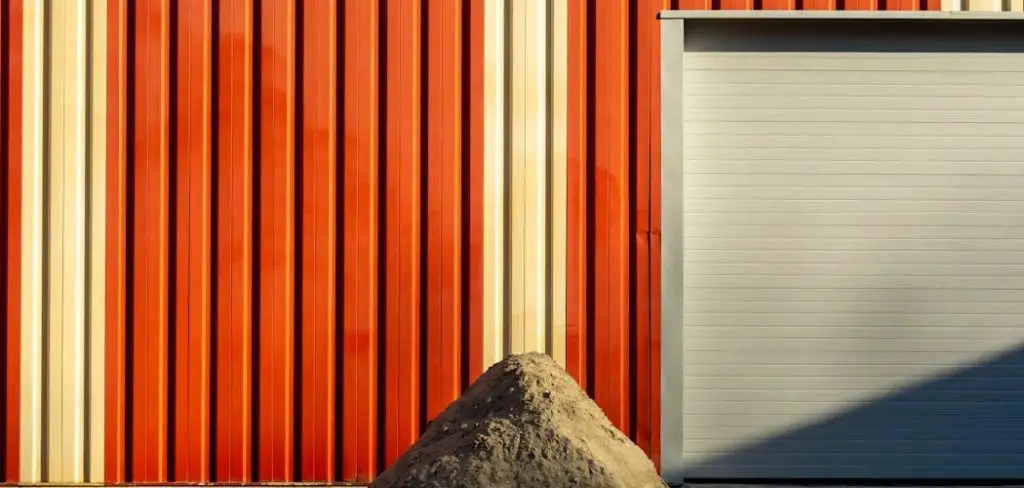
Classic colors like white, beige, and gray offer timeless elegance and versatility, while bolder choices like navy blue, deep green, or even a rich red can make a striking statement. Additionally, taking into account the environmental elements, such as sunlight exposure and climate, can influence color longevity and maintenance needs. With the right hue, your garage door can either blend seamlessly with the surrounding design or stand out as a distinctive feature, reflecting your unique style and enhancing the overall beauty of your home. This article explores the key considerations and tips for selecting the perfect garage door color, ensuring a harmonious and appealing exterior.
Importance of Garage Door Color
The color of your garage door plays a pivotal role in shaping the visual perception of your home. A thoughtfully chosen garage door color can enhance the architectural aesthetics, creating a cohesive and attractive look that complements the other elements of your exterior design. It can also significantly boost your home’s curb appeal, which is particularly important if you’re planning to sell your property.
Potential buyers often form their first impressions based on the exterior appearance, and a well-coordinated garage door color can convey a sense of harmony and attention to detail. Moreover, the right color can also help to hide dirt and dings, reducing the need for frequent maintenance and touch-ups. By choosing a color that resonates with your personal taste while harmonizing with your home’s design, you can create an inviting and stylish exterior that stands out in your neighborhood.
Exploring Color Psychology
Understanding the psychology of color can greatly enhance your decision-making process when choosing a garage door color. Colors have the power to evoke emotions and set the mood, influencing how people perceive your home. For instance, white and light neutral tones often project cleanliness and simplicity, creating a sense of spaciousness and calm. These shades tend to appeal to a broad audience and are often considered safe choices that enhance the home’s resale value.
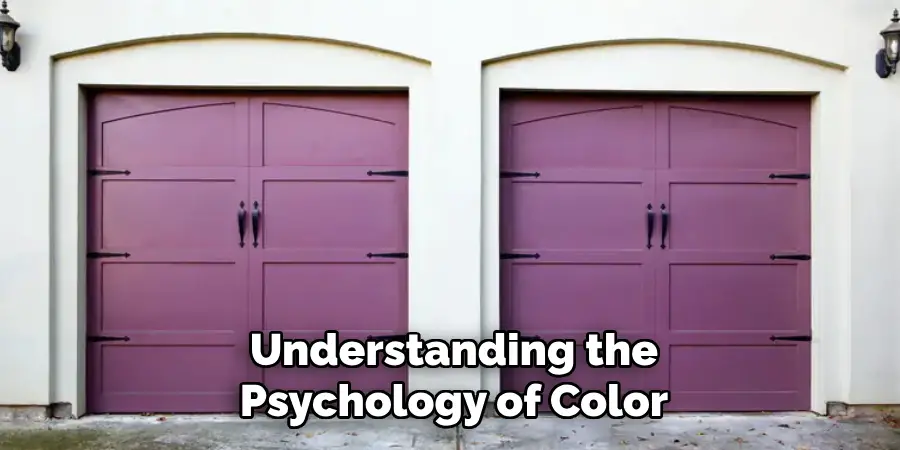
On the other hand, darker colors like black or deep gray can make a powerful statement, conveying sophistication and modernity. These hues can add a dramatic touch to your exterior, creating a striking contrast with lighter elements of your home’s façade. Bold colors such as navy blue or forest green can impart a feeling of stability and trustworthiness, while also adding a touch of elegance and depth to your overall design.
10 Methods How to Choose Garage Door Color
1. Consider the Home’s Exterior Color Scheme
The first step in choosing a garage door color is to consider your home’s existing exterior color scheme. Examine the colors of your siding, roof, trim, and other architectural elements. Ideally, your garage door should either match or complement these colors to create a cohesive look.
For instance, if your home has a neutral palette, a garage door in a similar shade or a slightly darker tone can blend seamlessly. On the other hand, a contrasting color can add visual interest and make the garage door a focal point. This method ensures that the garage door enhances the overall aesthetic of your home rather than clashing with it.
2. Reflect the Home’s Architectural Style
The architectural style of your home can greatly influence the color choice for your garage door. Different styles have traditional color palettes that enhance their distinct characteristics. For example, a Victorian home might benefit from a garage door in deep, rich colors, while a Mediterranean-style house may look best with earthy tones like terracotta or beige.
Colonial homes often feature classic colors such as white, black, or dark green. By choosing a color that aligns with your home’s architectural style, you can maintain historical accuracy and enhance the design’s authenticity.
3. Evaluate the Climate and Surroundings
Your home’s location and the surrounding environment should also be considered when choosing a garage door color. In sunny, warm climates, lighter colors like white, beige, or light gray can help reflect sunlight and keep the garage cooler.
Conversely, in cooler climates, darker colors like black, navy, or forest green can absorb heat and provide some warmth. Additionally, consider the natural surroundings, such as trees, flowers, and the landscape. A color that complements the natural environment can create a harmonious and pleasing appearance.
4. Match the Front Door and Trim
Matching the garage door color to your front door or trim can create a unified and polished look. This method is particularly effective if your garage door is a prominent feature of your home’s facade. By choosing the same color for the garage door, front door, and trim, you create a cohesive design that ties all elements together.
This approach works well for homes with a symmetrical design or those aiming for a classic, timeless appearance. It also simplifies the decision-making process, as you are working with a pre-determined color palette.
5. Consider the Impact of Natural Light
Natural light can significantly affect how colors appear, so it’s important to consider the lighting conditions around your garage door. A color that looks perfect in the shade might appear different in direct sunlight.
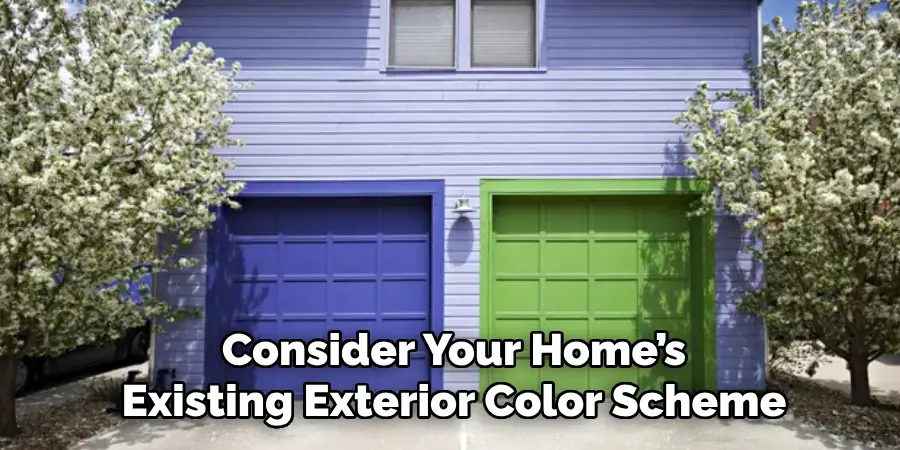
Before making a final decision, observe how different colors look on your garage door at various times of the day. Paint swatches directly on the door or use large sample boards to see how the colors change under different lighting conditions. This method helps you choose a color that maintains its desired appearance throughout the day and in all weather conditions.
6. Think About Future Trends
While it’s important to choose a color that you love, it’s also wise to consider future trends and resale value. Neutral and classic colors tend to have broader appeal and can make your home more attractive to potential buyers.
Colors like white, gray, beige, and brown are timeless choices that rarely go out of style. If you prefer bolder colors, try to balance them with neutral accents to avoid overwhelming the exterior. This method ensures that your garage door color remains stylish and appealing for years to come.
7. Use Color Psychology
Color psychology explores how colors affect emotions and perceptions. When choosing a garage door color, consider the mood and ambiance you want to create. For example, blue can evoke feelings of calmness and serenity, while red can convey energy and excitement.
Green is often associated with nature and tranquility, while black can add a sense of elegance and sophistication. By understanding the psychological impact of different colors, you can select a garage door color that not only looks good but also enhances the overall feel of your home.
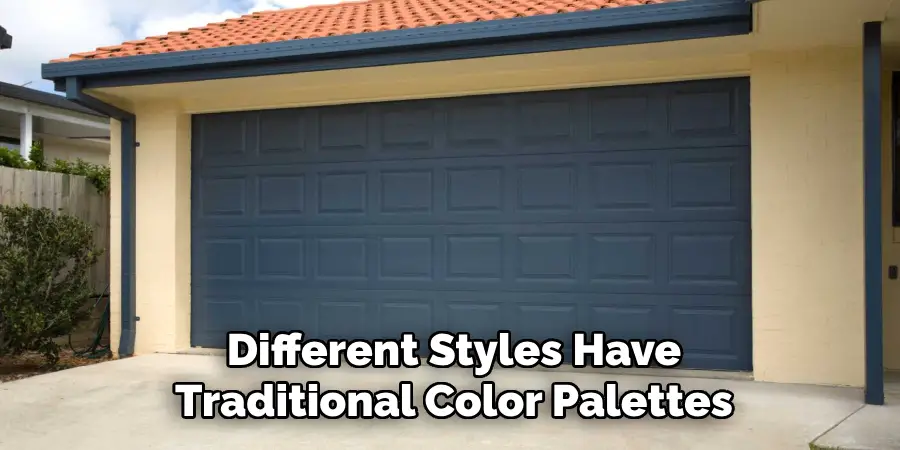
8. Test Small Areas First
Before committing to a full paint job, test your chosen color on a small area of the garage door. This step allows you to see how the color looks in real life and under different lighting conditions.
Purchase small sample pots of paint and apply them to a section of the door. Observe the color at different times of the day and in various weather conditions to ensure you are satisfied with the choice. This method minimizes the risk of disappointment and helps you make an informed decision.
9. Seek Professional Advice
If you’re unsure about choosing the right color, consider seeking professional advice. Color consultants or exterior designers can provide expert guidance based on their experience and knowledge.
They can help you choose a color that complements your home’s architecture, suits your personal style, and enhances curb appeal. Additionally, many paint companies offer online tools or apps that allow you to upload a photo of your home and visualize different garage door colors. This professional input can provide valuable insights and boost your confidence in making the right choice.
10. Coordinate with Neighboring Homes
While you want your home to stand out, it’s also important to ensure it blends harmoniously with neighboring properties. Look at the colors of garage doors in your neighborhood and choose a color that complements them.
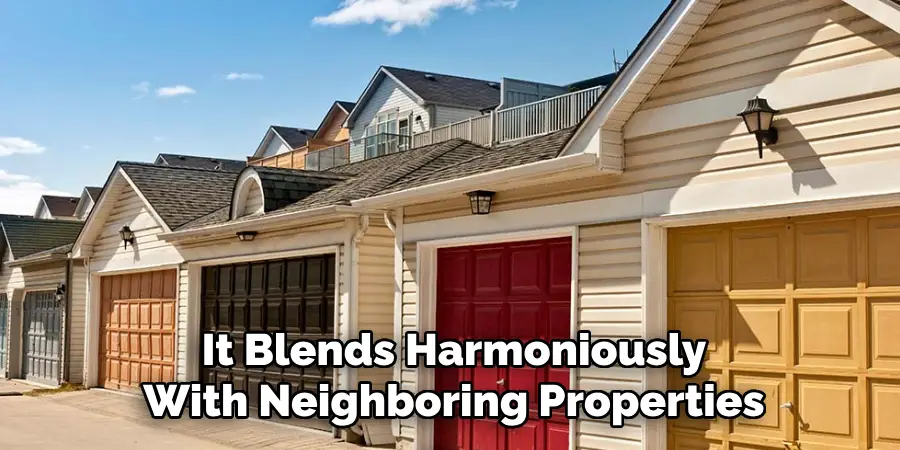
Avoid colors that are too similar to your immediate neighbors’ doors to maintain your home’s individuality. On the other hand, a color that starkly contrasts with the surrounding homes may look out of place. Strive for a balance that enhances your home’s unique features while respecting the overall aesthetic of the neighborhood.
Conclusion
Choosing the right color for your garage door is a significant decision that can greatly impact your home’s appearance and value.
By considering the home’s exterior color scheme, architectural style, climate, and surroundings, you can narrow down the options and find a color that harmonizes with your home’s design. Thanks for reading, and we hope this has given you some inspiration on how to choose garage door color!

